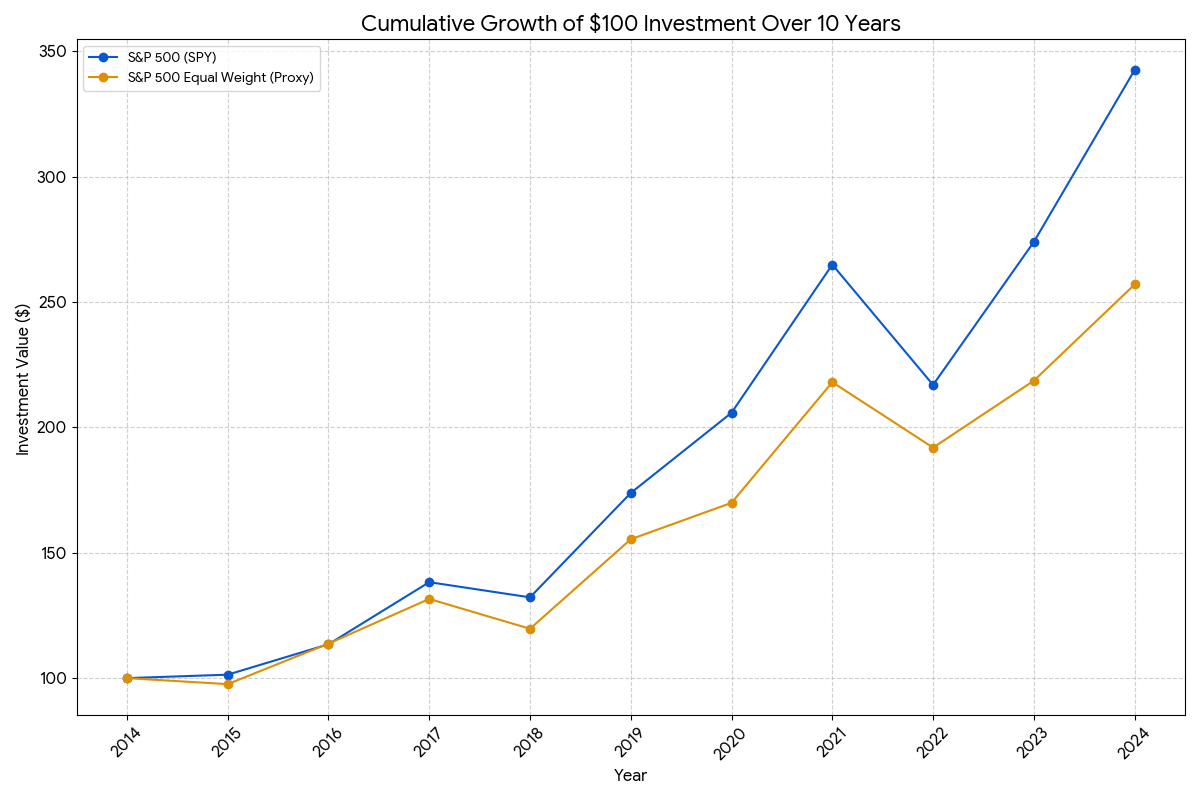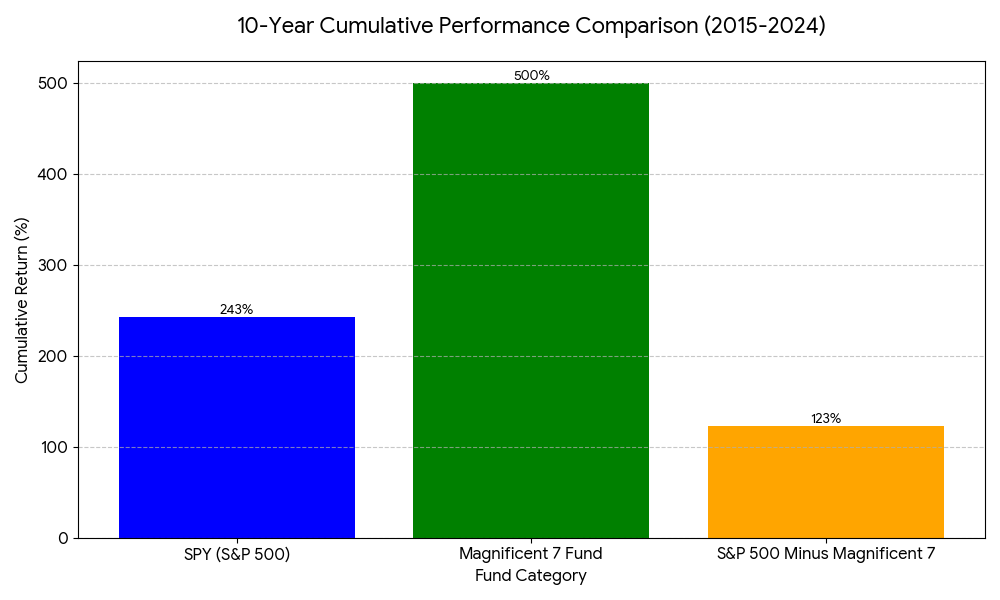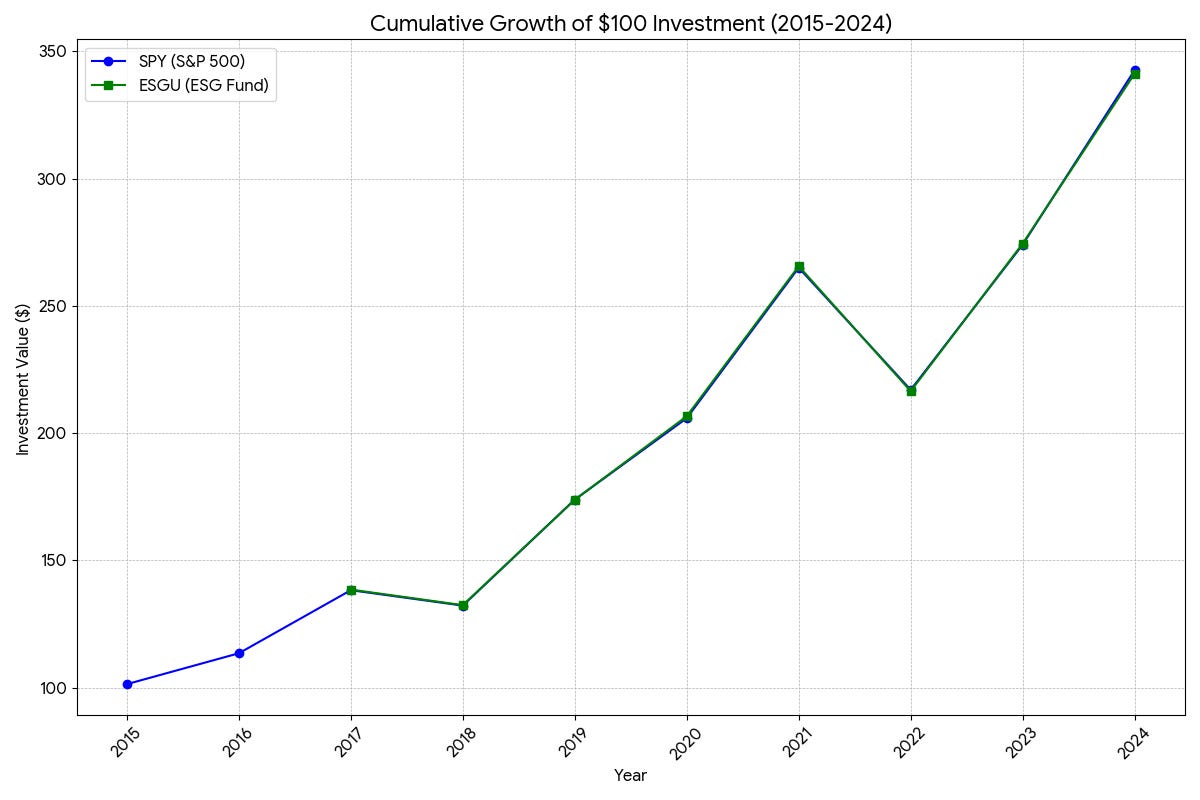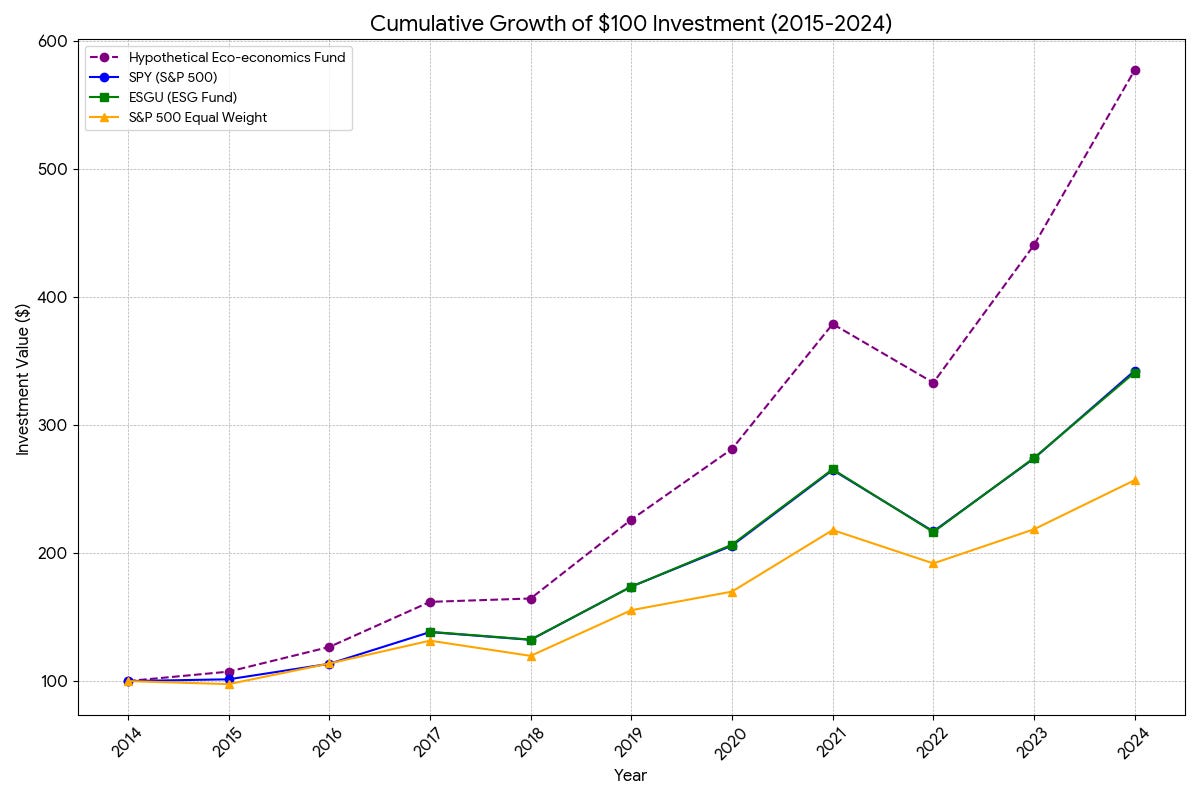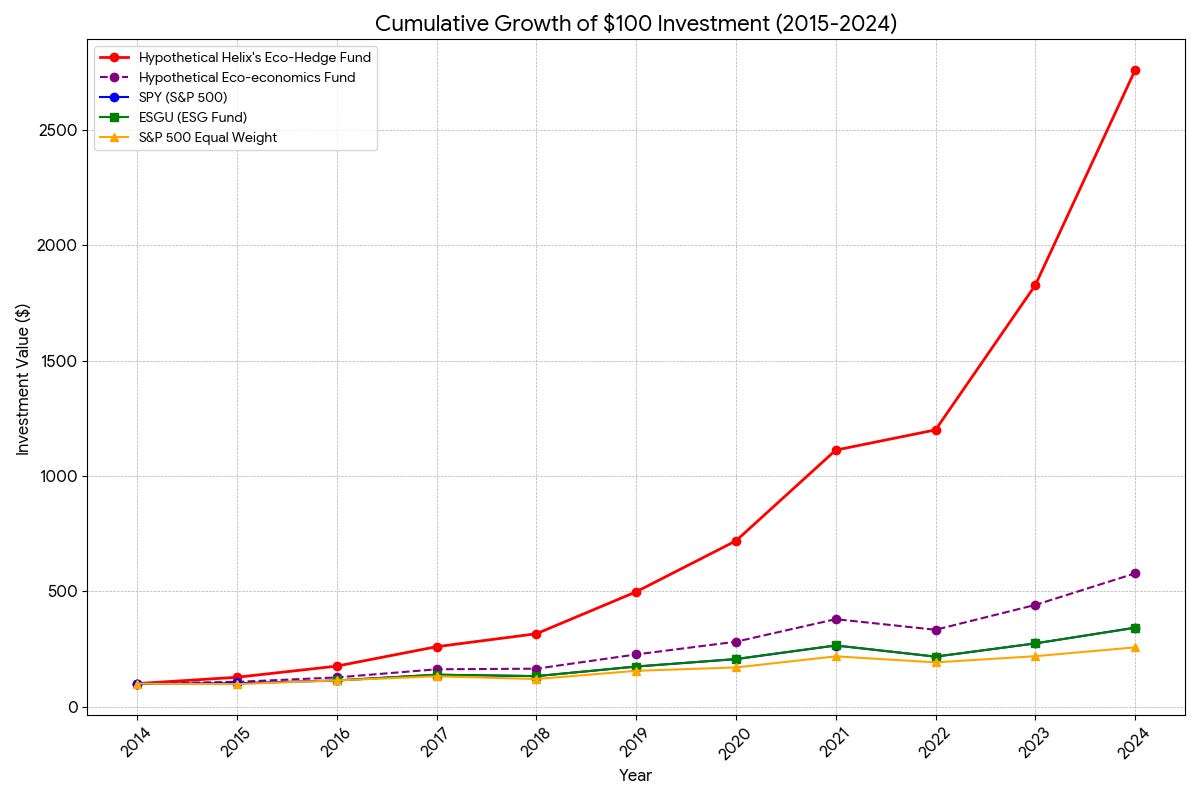Did ESG deliver for you?
How the Eco-economics Thesis and AI are Reshaping Investment for the Savvy Investor
Are you an individual Limited Partner (LP) or a family office looking for more than just market returns? Do you want your capital to work harder, not just for your portfolio, but for a sustainable future?
Until about year 2015, index funds provided good value, at a low price point. If you look at the returns of the S&P 500 or the FTSE 100. This is the tipping point when the returns of the market standard index funds have been increasingly impacted by the largest tech stocks (the Mag7). Now, the S&P 500 has 503 stocks and, while the magnificient 7 tech stocks (NVDA, GOOG, META, AAPL, MSFT, AMZN, TSLA) existed before 2015, something flipped that year, and the value of the index fund, increasingly depended on the performance of these tech stocks.
Now, ask yourself the question, whether allocating capital to the remaining 503-7 = 496 stocks, adding value to you, and even if you convince yourself as diversification, do you need 496 vs 7 stocks?
Now, around the same time, ESG investing became mainstream in 2015. It was an investment criteria, back in 2004-05, but was used to invest in large issuances of corporates, hence it was mostly institutional capital that was chasing these.
Since 2015, and ESG rated mutual funds and ETFs have been available to you. Plus, there have been ESG offerings available through pension providers since around that time. For the most part, they have either tracked market neutral funds/ ETFs or have delivered slightly lower returns. A 1% lower annual return, snowballs over the 10 year period, and despite the strong ESG commitments, investors haven’t been able to contain their frustrations.
ESGU was probably the best we could find, if we wanted ‘at least’ a market return, without compromising on ESG. Now, some investors get me started, by asking questions on the Xray reports of ESG funds. Let’s get that out clearly - most ESG funds hold fossil fuel and other typical non-ESG investments, so you can’t blindly trust an asset manager to find ESG rated investments.
For years, many of you have explored ESG (Environmental, Social, Governance) investing, seeking to align your values with your financial goals. While ESG funds like ESGU have done a commendable job in integrating sustainability factors, they often closely track the broader market. As our analysis shows, over the last decade, an ESG fund (like ESGU) has mirrored the S&P 500 (SPY), achieving similar cumulative growth.
What if we applied the Eco-economics Thesis to select stocks, from the S&P 500?
The "Eco-economics Thesis" suggests that the global transition to a sustainable and digitally interconnected economy isn't just a trend; it's a fundamental driver of future market value. This thesis posits that by investing in companies leading this transition ("eco-leaders") and divesting from those resisting it ("eco-laggards"), investors can tap into a new source of alpha.
The Eco-economics Thesis Applied to SPY: A Strong Foundation
Let's first consider the "Eco-economics Thesis Applied to SPY." Even a conservative application of this thesis, aiming for just 5-7% additional annual returns over the S&P 500, shows a significantly enhanced growth trajectory. Over a decade, this translates to substantially higher cumulative returns, demonstrating the power of a focused strategy. The chart below illustrates this potential, showing how simply adding this layer of strategic insight can elevate your portfolio's performance. We selected 12-15 stocks from the S&P 500’s 503 (currently 503) stocks, and backtested it. The chart below shows a significantly enhanced trajectory.
At Helix, we apply the Eco-economics thesis, to run our fund, but we use our HTI2 graph neural network to identify the stocks and shortlist them, and identify the right signals. The graph below shows the backtest of the Helix eco-hedge fund, using the HTI2 system, in combination with the Eco-economics thesis. The real results can be found on our website.
The fund has suitability requirements and a minimum capital investment. Please review details on our website for more information, and consult your financial advisor to understand the underlying risks and the return profile.


